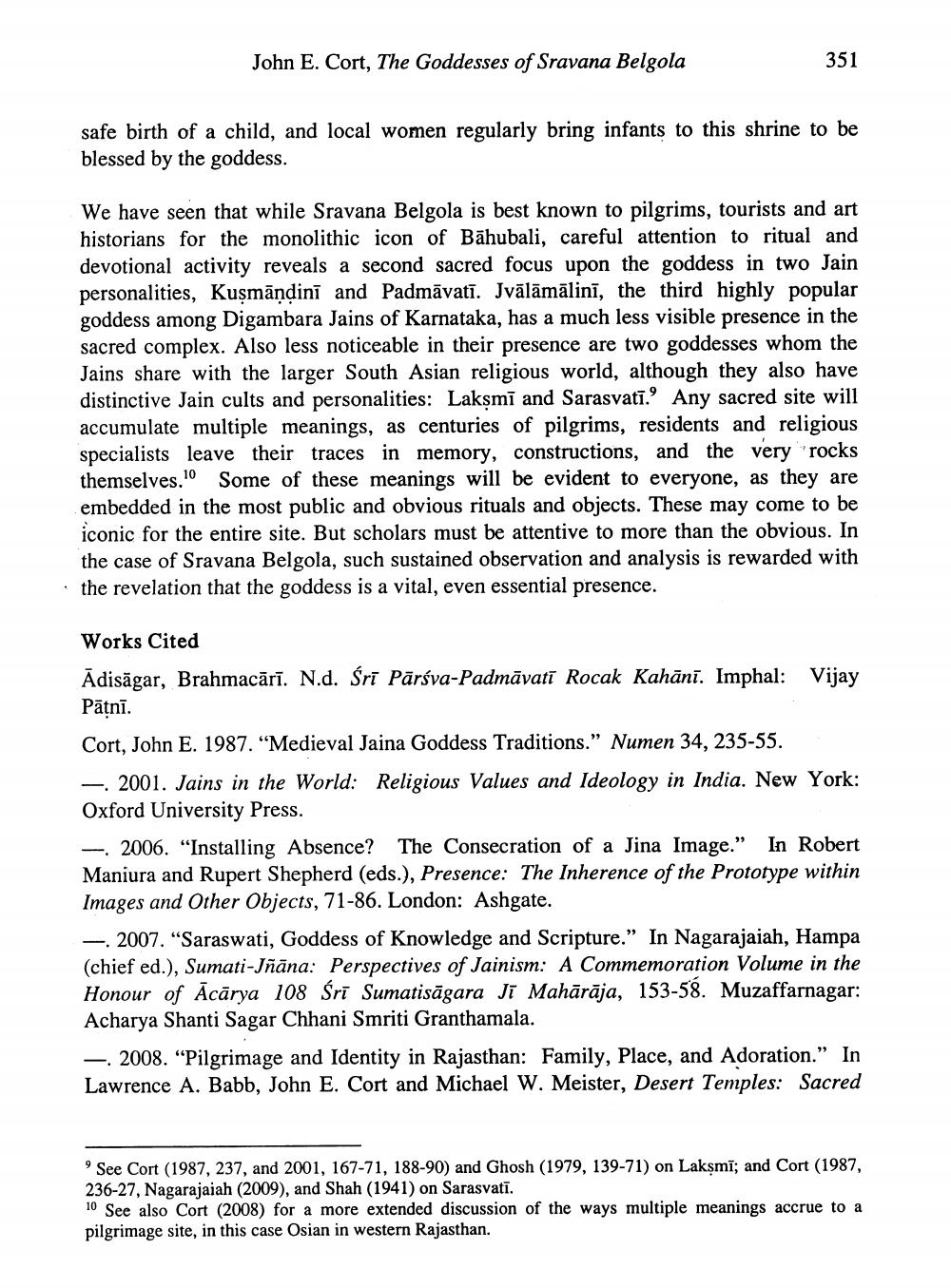________________
John E. Cort, The Goddesses of Sravana Belgola
351
safe birth of a child, and local women regularly bring infants to this shrine to be blessed by the goddess.
We have seen that while Sravana Belgola is best known to pilgrims, tourists and art historians for the monolithic icon of Bāhubali, careful attention to ritual and devotional activity reveals a second sacred focus upon the goddess in two Jain personalities, Kusmāndini and Padmāvatī. Jvālāmālinī, the third highly popular goddess among Digambara Jains of Karnataka, has a much less visible presence in the sacred complex. Also less noticeable in their presence are two goddesses whom the Jains share with the larger South Asian religious world, although they also have distinctive Jain cults and personalities: Laksmī and Sarasvatī. Any sacred site will accumulate multiple meanings, as centuries of pilgrims, residents and religious specialists leave their traces in memory, constructions, and the very rocks themselves. Some of these meanings will be evident to everyone, as they are embedded in the most public and obvious rituals and objects. These may come to be iconic for the entire site. But scholars must be attentive to more than the obvious. In
the case of Sravana Belgola, such sustained observation and analysis is rewarded with • the revelation that the goddess is a vital, even essential presence.
Works Cited Adisāgar, Brahmacārī. N.d. Śrī Pārsva-Padmāvati Rocak Kahānī. Imphal: Vijay Pātnī. Cort, John E. 1987. “Medieval Jaina Goddess Traditions.” Numen 34, 235-55. - 2001. Jains in the World: Religious Values and Ideology in India. New York: Oxford University Press.
- 2006. "Installing Absence? The Consecration of a Jina Image.” In Robert Maniura and Rupert Shepherd (eds.), Presence: The Inherence of the Prototype within Images and Other Objects, 71-86. London: Ashgate. - 2007. "Saraswati, Goddess of Knowledge and Scripture." In Nagarajaiah, Hampa (chief ed.), Sumati-Jñāna: Perspectives of Jainism: A Commemoration Volume in the Honour of Ācārya 108 Śrī Sumatisāgara Ji Mahārāja, 153-58. Muzaffarnagar: Acharya Shanti Sagar Chhani Smriti Granthamala.
- 2008. "Pilgrimage and Identity in Rajasthan: Family, Place, and Adoration." In Lawrence A. Babb, John E. Cort and Michael W. Meister, Desert Temples: Sacred
See Cort (1987, 237, and 2001, 167-71, 188-90) and Ghosh (1979, 139-71) on Lakşmī; and Cort (1987, 236-27, Nagarajaiah (2009), and Shah (1941) on Sarasvati. 10 See also Cort (2008) for a more extended discussion of the ways multiple meanings accrue to a pilgrimage site, in this case Osian in western Rajasthan.




